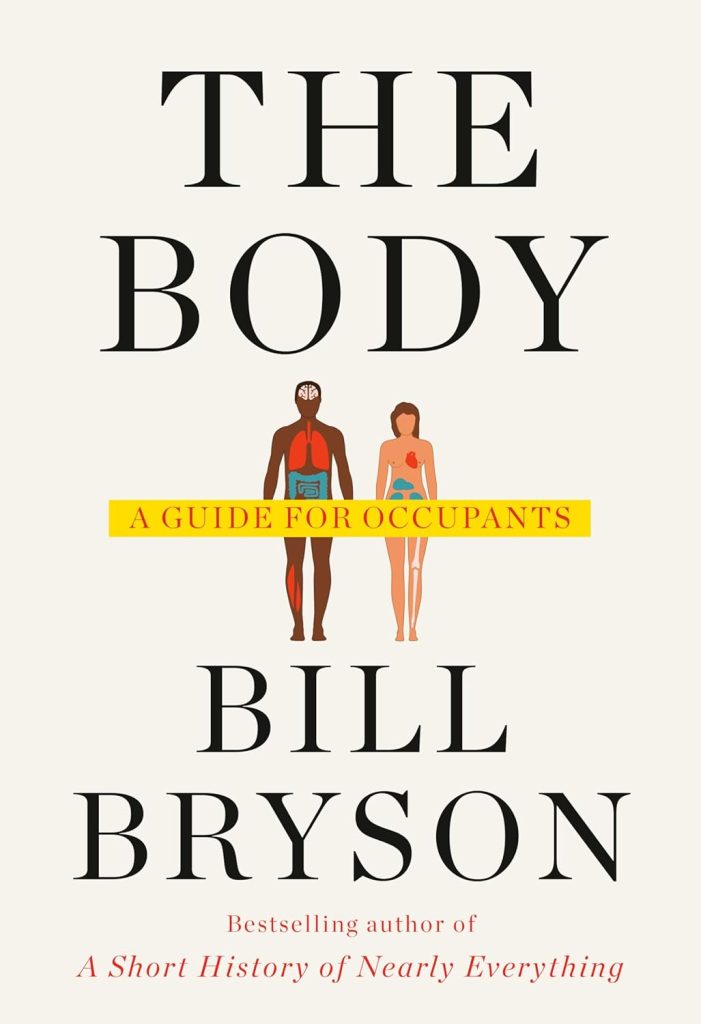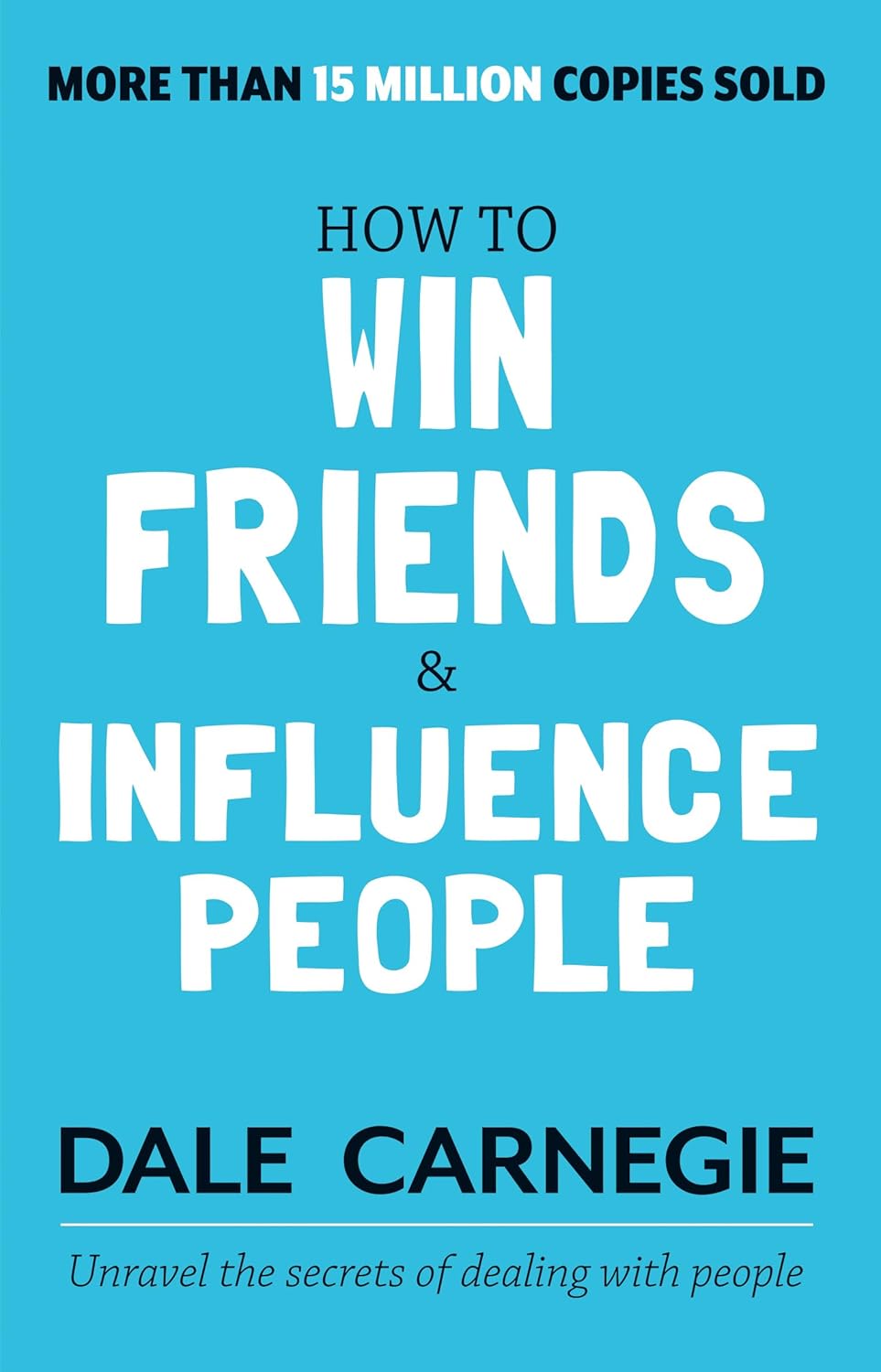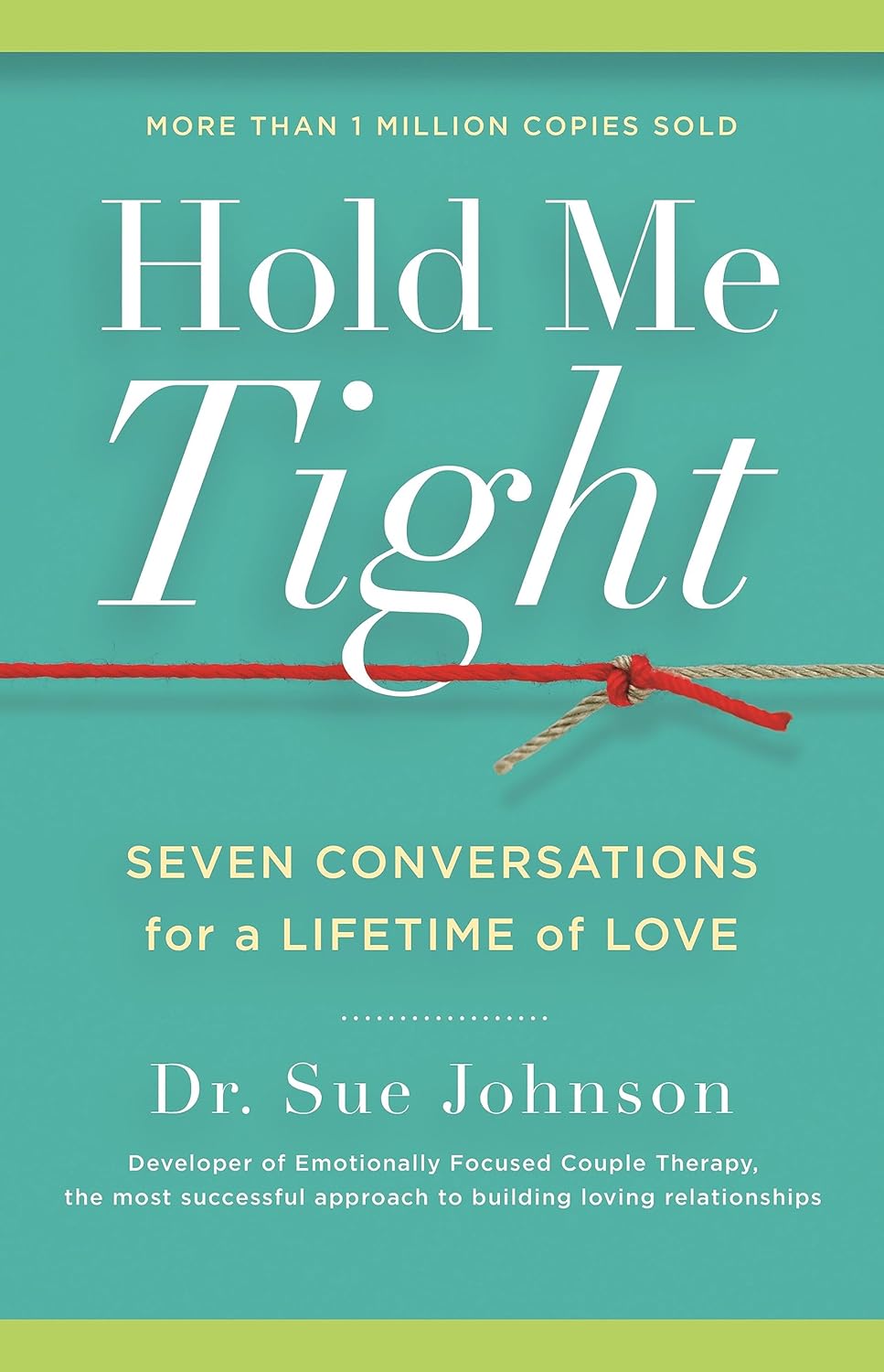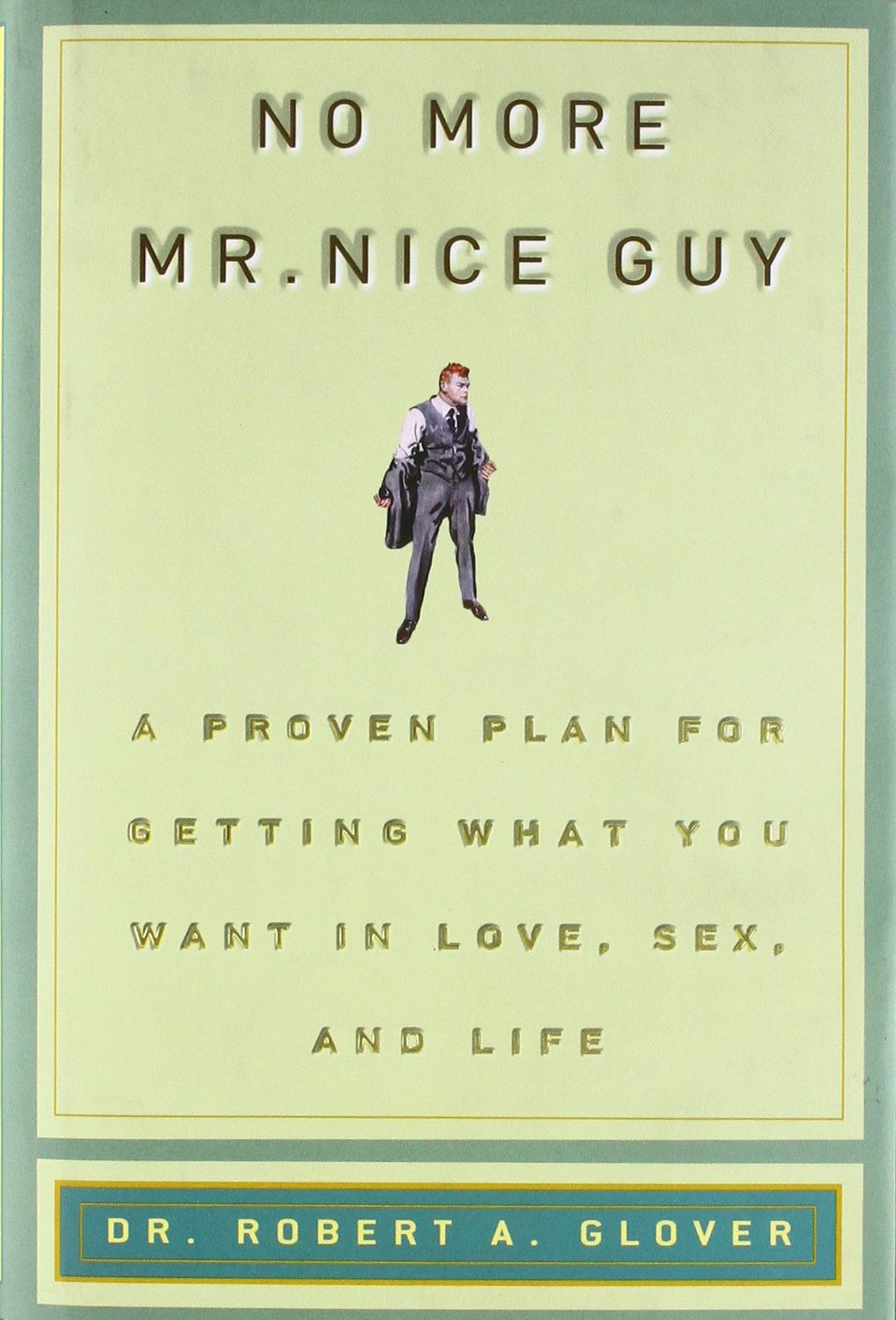
Buy The Book
Chapter
- ✦ Chapter 1. How to Build a Human
- ✦ Chapter 2. The Outside: Skin and Hair
- ✦ Chapter 3. Microbial You
- ✦ Chapter 4. The Brain
- ✦ Chapter 5. The Head
- ✦ Chapter 6. Down the Hatch: The Mouth and Throat
- ✦ Chapter 7. The Heart and Blood
- ✦ Chapter 8. The Chemistry Department
- ✦ Chapter 9. In the Dissecting Room: The Skeleton
- ✦ Chapter 10. On the Move: Bipedalism and Exercise
- ✦ Chapter 11. Equilibrium
- ✦ Chapter 12. The Immune System
- ✦ Chapter 13. Deep Breath: The Lungs and Breathing
- ✦ Chapter 14. Food, Glorious Food
- ✦ Chapter 15. The Guts
- ✦ Chapter 16. Sleep
- ✦ Chapter 17. Into the Nether Regions
- ✦ Chapter 18. In the Beginning: Conception and Birth
- ✦ Chapter 19. Nerves and Pain
- ✦ Chapter 20. When Things Go Wrong: Diseases
- ✦ Chapter 21. When Things Go Very Wrong: Cancer
- ✦ Chapter 22. Medicine Good and Bad
- ✦ Chapter 23. The End
The Body: A Guide for Occupants

About
Bill Bryson, celebrated for his accessible explorations of complex subjects, turns his attention to the human body in “The Body: A Guide for Occupants.” With his signature wit and engaging style, Bryson navigates the intricate workings of our physical selves, from the microscopic world of cells to the grand scale of organ systems.
The book delves into the marvels and mysteries of anatomy and physiology, revealing fascinating facts about how our bodies function, heal, and sometimes fail. Bryson explores everything from the skin’s role as a versatile organ to the brain’s astonishing capacity for perception and memory. He also touches on diseases, medical advancements, and the ongoing quest to understand the human form. “The Body” is a captivating journey through the landscape within, making complex science accessible and entertaining for all readers.

Spark
Learn
Review
✦ Chapter 1. How to Build a Human
It’s a discussion about what makes us; the human body is explored in terms of basic components. We are made up of fairly inexpensive ingredients readily available, yet the complexity of assembly renders us priceless. It marvels at how inert components can give rise to consciousness. It urges us to appreciate our forms, which tirelessly perform countless tasks without our conscious input, often while being simultaneously neglected through lifestyle choices.
We learn how resilient the body truly is; withstanding daily abuse and fighting off cancerous cells. The narrative reflects on a journey through evolutionary adaptations spanning billions of years, resulting in who we are today. It highlights the intricate coordination needed to build the systems and structures that make up a working human, enabling us to experience life. That’s an exploration of the building blocks and design of the human form, it showcases a deep appreciation for the delicate and miraculous nature of our existence.
✦ Chapter 2. The Outside: Skin and Hair
The skin is introduced as the largest and most versatile organ, serving as a container for our insides and a barrier against external threats. It provides a sense of touch, offering both pleasure and pain and produces melanin for sun protection. The structure of the skin is explained, from the outer epidermis composed of dead cells to the active dermis and subcutaneous fat layer. The discussion goes on that a lot of flakes, squamae, and dust trail behind as we silently turn to dust.
Various receptors in the dermis keep us in touch with the world, while debunking the idea of receptors for wetness. Also skin color is examined, emphasizing melanin’s role. Hair’s purpose and the reasons behind our relative hairlessness are pondered, alongside the mysteries of fingerprints and sweat glands. The evolutionary aspects of skin color, influenced by sunlight exposure and genetics, are discussed.
✦ Chapter 3. Microbial You
The text discusses the importance of microbes, highlighting that we live in a world dominated by them. The number of microbes within us far exceeds our cells, and a large part of our genetic makeup is from them. Our individual collections of microbes are also highly specific. Most microbes are harmless; some live benignly within us, and only a few make us sick. Besides bacteria, we also contain fungi, viruses, protists and archaea.
Viruses, neither living nor dead, are weird. Not all viruses are harmful, and they come in countless varieties. It also talks about a French team that found a virus, Pithovirus sibericum, that had been locked in permafrost for 30,000 years. Fungi were once mysterious, but they are not very like plants. Though most are harmless, some can be nasty, such as Candida albicans. Protists are any organism that does not fit into the categories of plant, animal, or fungus, and some can give us malaria.
The text shows that we are only beginning to learn the effects that microbes have on us. It urges a targeted approach. One is to interrupt bacteria’s communication. Another option is to make use of bacteriophages. Something has to be done.
✦ Chapter 4. The Brain
Inside your head is the most extraordinary thing: the brain. Nothing in outer space may be as wonderful, complex, and high-functioning as this three-pound spongy mass. It’s mostly water, fat, and protein – seemingly mundane stuff to enable thought, memory, and vision. Your brain exists in darkness and silence, like a prisoner. It receives only electrical pulses and creates a vibrant, engaging universe for you. The brain is you; everything else is just plumbing.
Even doing nothing, your brain processes more information in 30 seconds than the Hubble Space Telescope has in 30 years. It can hold a massive amount of information, rivaling the digital content of the modern world. The brain makes up 2% of body weight but uses 20% of your energy. Newborn brains use even more, explaining why babies sleep so much. While muscles use more energy overall, the brain is the most expensive organ per unit. Efficient brains solve tasks quickly and then go into standby mode. Although it is small but it is very useful.
✦ Chapter 5. The Head
The head, a complex structure, becomes the focal point. It is fascinating to delve into the world of vision and its intricate error-correcting mechanisms. The power of smell and how it links to memory and emotion is examined. It shows that the senses intertwine with our most basic instincts and recollections.
The delicate balance and hearing mechanisms are explored with their crucial role in spatial orientation. I am impressed by the design.
The evolutionary aspects of teeth, tongue, and palate, unique to humans, are investigated as well as the mouth. It dives into how these features have adapted to meet our dietary needs and communicative abilities. Also it shows how our bodies try to find good ways to help us.
The challenges our heads face due to evolutionary compromises is considered, marveling at the symphony of actions. It is clear that the head’s processes are complex, making it both a marvel and a source of wonder. It shows the constant pursuit to understand this complex structure.
✦ Chapter 6. Down the Hatch: The Mouth and Throat
The journey of food from mouth to stomach is explored, highlighting the vital roles of saliva and the epiglottis in this process. Taste perception is examined, exploring how it changes with age and external factors, and its influence on our food preferences is explored.
The chapter touches upon the swallowing difficulties and their various causes, including stroke and neurological disorders that can disrupt this essential bodily function. An overview of the esophagus and its functions, including peristalsis and sphincter control, is provided, revealing the mechanics behind the smooth passage of food.
Consideration is given to common issues like heartburn and acid reflux, explaining their causes and potential complications. The chapter emphasizes the sophisticated processes that transform a simple bite into nourishment, noting the complexities involved in taste, swallowing, and digestion. Dysphagia, or difficulty swallowing, is a significant health concern, particularly for the elderly and those with neurological conditions. Lastly, it’s a review about the esophagus and its functions, like peristalsis.
✦ Chapter 7. The Heart and Blood
The heart, the body’s tireless engine, is examined. The mechanics of its pumping action and the complexities of the circulatory system are explored, with the different types of blood cells and their functions explained. An overview of blood pressure, how it’s measured, and what the readings mean are highlighted. Hypertension and atherosclerosis, are also examined. The discussion focuses on understanding how blood is pumped, through the use of the author’s personal experience, and shows the sheer determination of human innovation. The development and improvement of medical procedures is also highlighted. The importance of blood transfusions and the history of bloodletting is also looked at. It ends by delving into the history of understanding blood and circulation, and highlighting the essential role blood plays in the body’s health.
✦ Chapter 8. The Chemistry Department
The body’s chemical processing is examined focusing on the liver and kidneys. The discussion emphasizes the liver’s multifaceted role, handling detoxification, nutrient processing, and much more. There is a consideration of the kidneys’ vital function in filtering wastes and maintaining the body’s fluid balance. The section touches on common issues that these organs face, such as kidney stones and liver diseases, offering insight into what can disrupt their functions.
There is an overview of the delicate balance of the body’s internal chemistry, highlighting how these organs work tirelessly to keep everything running smoothly. Also explored is how modern life, with its processed foods and environmental toxins, places increasing demands on these systems. In essence, this part shines a light on how our lifestyle and choices can impact the organs responsible for maintaining the purity and equilibrium of the body’s internal environment. These organs’ resilience and adaptability, are deemed essential for long-term health.
✦ Chapter 9. In the Dissecting Room: The Skeleton
The body’s supportive framework is explored. Bone is described as a unique structure composed of living tissue and minerals, also highlighting its ability to heal. The importance of bone marrow in the production of blood cells is examined. Also discussed are some common bone ailments, including osteoporosis and arthritis.
I have read about the history of anatomical dissection, I marvel at the complex framework that holds us upright.
The number of bones that make up a skeleton is 206, but it varies with age because babies has 350 bones. Bones have compact and spongy part. Bones are more alive than it gets credit for. Bones can repair itself, so many times it’s an inconvenience. Also mentioned is the importance of calcium.
What I learned today, they are amazing and they are underappreciated.
✦ Chapter 10. On the Move: Bipedalism and Exercise
Walking upright is a pretty peculiar adaptation, one achieved through a series of evolutionary compromises. Our spines, pelvises, and feet have all shifted and changed, causing us to be prone to back pain, knee problems, and hernias. Despite these drawbacks, bipedalism freed our hands, and gave us a new perspective, literally.
Exercise, though often dreaded, is crucial. Sedentary lifestyles contribute to a host of modern ailments, from heart disease to diabetes. A body in motion stays healthier, longer. The musculoskeletal system orchestrates movement, a complex interplay of muscles, bones, and nerves. A sedentary lifestyle also is one of the quickets way to the suicide. It also increases the chance of some kind of death.
I also see how we were not adapted to stand like this, with so many potential issues related. To make us be prone to back pain, knee issues and so many things that make us feel pain. Despite, exercise is an important element of life, and sedentary lifestyle is equal to some diseases. The movement it requires more elements related, like bones and more.
✦ Chapter 11. Equilibrium
Maintaining balance relies on an intricate collaboration involving eyesight, inner ear mechanisms, and proprioceptors. The inner ear holds a specialized structure housing three semicircular canals, each attuned to spatial dimensions, which perceives motion as fluid shifts stimulate sensitive hairs.
Eyesight further refines equilibrium by offering visual cues, enhancing postural control, especially useful when navigating uneven terrain. Proprioceptors, nerve endings present in muscles and joints, send continual positional data to the brain, pivotal for swift, subconscious balance adjustments.
These elements synergize to provide a persistent sense of orientation. Disruptions in any of these components—be it inner ear issues, visual impairment, or nerve damage—can lead to imbalance and instability.
✦ Chapter 12. The Immune System
The immune system is a complex and crucial network. It defends against a relentless barrage of harmful intruders. This intricate defense force is scattered throughout the body. Its actions are coordinated with remarkable precision.
A key aspect is its ability to distinguish between “self” and “non-self.” It recognizes your body’s own cells and tissues. It identifies foreign invaders like bacteria, viruses, and parasites. The system mounts an attack only on these outsiders.
Components include cells like lymphocytes, macrophages, and antibodies. These work together to neutralize threats. Inflammation, fever, and other responses are part of its arsenal. Sometimes, the system malfunctions, leading to autoimmune diseases or allergies. Understanding its intricacies is vital to appreciating our body’s resilience. It highlights the constant battle waged within us to maintain health.
✦ Chapter 13. Deep Breath: The Lungs and Breathing
Within the chapter, the vital function of breathing and the organs responsible for it are clarified. It explains how the lungs operate, from the intake of oxygen to the expulsion of carbon dioxide. The mechanics of respiration, involving the diaphragm and rib cage, are described, as well as the intricate network of airways, including the trachea, bronchi, and bronchioles.
Furthermore, common respiratory ailments such as asthma, bronchitis, and pneumonia, including their causes and impact on lung function, are examined. The chapter touches on the significance of maintaining healthy lungs through lifestyle choices, such as abstaining from smoking and avoiding air pollution, and it underscores the importance of understanding and protecting our respiratory system for overall well-being.
✦ Chapter 14. Food, Glorious Food
Food serves not only as sustenance but also as a source of immense pleasure and comfort. The act of eating is explored, highlighting how humans derive enjoyment from various cuisines and culinary experiences.
Digestion and how the body processes different types of food are examined. The journey of food through the digestive system, from the mouth to the intestines, focusing on the complex chemical reactions and processes involved in breaking down nutrients is described. How the body extracts essential vitamins and minerals from food, emphasizing the importance of a balanced diet for overall health is explained.
The global food industry and its impact on both health and the environment are taken into account. The challenges of food production, distribution, and consumption in a rapidly changing world are also addressed.
✦ Chapter 15. The Guts
We explores the complicated world inside your abdomen. The digestive system, often taken for granted, is actually a complex arrangement. Food is processed through a winding series of steps, breaking it down into usable parts for the body.
The chapter goes into the small and large intestines, each with unique jobs in the digestive process. Important things, like nutrients, are taken out, and waste is prepared for removal. Microbes living in the intestines, called gut flora, help with these jobs and keep you healthy overall.
Problems like lactose intolerance and celiac disease, where the digestive system has problems with specific foods, are also examined. Also, conditions such as appendicitis, diverticulitis, and irritable bowel syndrome (IBS) are looked at, all of which can cause discomfort and health problems. The amazing and sometimes troubling world of the human digestive system is described in the chapter.
✦ Chapter 16. Sleep
Food goes beyond mere survival, offering immense pleasure and comfort. The simple act of eating is examined, underscoring how different cuisines and culinary experiences bring enjoyment.
The intricate digestion process is described, detailing how the body handles different types of food. The journey of food through the digestive system, from the mouth to the intestines, is thoroughly gone through, emphasizing the complex chemical reactions and the breakdown of nutrients. How the body extracts essential vitamins and minerals from food is described, focusing on the importance of a balanced diet for overall health.
The global food industry and its considerable effects on health and the environment are taken into account. The challenges of food production, distribution, and consumption in our rapidly changing world are also addressed. The narrative serves as a reminder of the vital role food plays and its influence on our well-being and the planet.
✦ Chapter 17. Into the Nether Regions
The discussion turns to the less glamorous, often overlooked, aspects of our physical selves: the nether regions. These areas, typically shrouded in societal unease, are vital to our overall health and well-being.
A significant portion of the discussion is dedicated to the rectum and the complex processes of waste elimination. It highlights how this system, while unappealing in thought, is a marvel of biological engineering. The narrative also touches upon common ailments that befall this area, such as hemorrhoids, fissures, and other discomforts.
The chapter addresses the topic of flatulence, its causes, and its wide range of social implications.
✦ Chapter 18. In the Beginning: Conception and Birth
Conception, a rather hit-or-miss process, starts with a substantial number of sperm embarking on a challenging mission. The journey to fertilize an egg is fraught with peril, only a fraction making it through the hostile environment of the female reproductive tract.
Upon successful fertilization, the egg undergoes rapid transformations as cells divide and specialize. The development process features several critical stages, each requiring precise coordination. Any misstep during this intricate phase can lead to developmental abnormalities.
The body handles pregnancy with remarkable adaptability. It will alter hormone production, immune responses, and even cardiovascular function to accommodate the growing fetus. Birth marks the culmination of this transformative journey, though risks remain for both mother and child.
✦ Chapter 19. Nerves and Pain
Nerves and pain involve a complex system vital for survival, acting as the body’s warning signals. Pain, though unpleasant, is essential for recognizing and reacting to potential harm. Without it, injuries and ailments could go unnoticed, leading to severe consequences.
The nervous system, a sophisticated network, transmits signals throughout the body. Sensory receptors detect various stimuli, such as touch, temperature, and pressure, converting them into electrical impulses that travel along nerves to the brain. The brain interprets these signals, allowing us to perceive the world and respond appropriately.
Pain signals are triggered by tissue damage or inflammation, activating specialized nerve fibers that relay information to the spinal cord and brain. The intensity and location of pain are processed in different brain regions, leading to a subjective experience unique to each individual.
While pain serves a protective function, chronic pain can be debilitating and challenging to manage. Understanding the complexities of nerve function and pain pathways is crucial for developing effective treatments and improving the quality of life for those suffering from persistent pain conditions.
✦ Chapter 20. When Things Go Wrong: Diseases
We discusses the myriad ways the body can falter, cataloging ailments from the mundane to the life-altering. The sheer volume of potential diseases, numbering over eight thousand according to the World Health Organization, highlights the precariousness of health.
Genetic predispositions significantly shape vulnerability to illnesses like heart disease, cancer, and diabetes. While lifestyle choices influence health outcomes, genetics load the gun. Mental health receives attention, emphasizing the profound impact of conditions like depression, anxiety, and schizophrenia, often stemming from chemical imbalances or structural abnormalities in the brain.
Infectious diseases remain a persistent threat, with new pathogens constantly emerging and old ones evolving resistance. The chapter touches on the significance of vaccination in disease prevention and the challenges of antibiotic resistance. Autoimmune disorders, where the body attacks itself, are explored, underscoring the complexities of the immune system. The narrative emphasizes the body’s amazing resilience despite these potential pitfalls.
✦ Chapter 21. When Things Go Very Wrong: Cancer
Cancer: a dreaded disease, yet cells turn cancerous with surprising frequency. Our bodies, however, possess a remarkable defense system, capturing and eliminating these threats. It’s estimated that several times a week, we encounter this disease, only to be saved by our body’s vigilance.
Occasionally, this defense falters, and cancer takes hold. While it’s a leading cause of mortality, it’s essential to recognize that the countless cells replicate billions of times, and cancers are rare event.
We consist of trillions of cells working in synchrony. Minor aches, pains, or blemishes are the exceptions to the rule. Thousands of potential fatal conditions exist, yet we avoid nearly all of them. While we have imperfections – wisdom teeth problems, childbirth difficulties, and susceptible to backaches – the fact that we function as well as we do is a miracle. Our bodies originate from ancestors including fish and burrow-dwelling creatures. Considering this evolutionary journey, it is remarkable that cancer does not occur even more regularly.
✦ Chapter 22. Medicine Good and Bad
I explore the perplexing nature of medicine, where intentions and outcomes don’t always align. Sometimes, remedies with noble origins cause harm, while unconventional treatments yield unexpected benefits. Discoveries occur by chance, and firmly held beliefs get overturned. I present the mixed legacy of medical progress.
Aspirin’s story showcases this complexity. Initially hailed as a pain reliever, later links to Reye’s syndrome in children emerged. The chapter emphasizes the importance of questioning medical dogma and recognizing the limits of our understanding. Often, medical advancements arise from serendipitous observations rather than deliberate searching.
The narrative probes the delicate balance between faith and science in healthcare. We acknowledge the power of the placebo effect, underscoring the intricate connection between mind and body. The chapter suggests approaching medical treatments with cautious optimism and a healthy dose of skepticism. I invite reflection on how medical understanding evolves, shaping our perception of what constitutes “good” and “bad” medicine.
✦ Chapter 23. The End
I consider the inevitable conclusion that awaits us all. The nature of demise remains largely a mystery, with various potential causes, though one will ultimately prevail. Sometimes, the end arrives swiftly, like a light being extinguished, or it can be a gradual fading. Despite advancements in medical science, aging remains an unconquered enigma.
The goal isn’t to avoid death entirely, but to prolong life and maintain well-being for as long as possible. It’s about savoring every moment, cherishing relationships, and appreciating the wonders of existence.
Acknowledging mortality is a profound realization that encourages us to embrace life fully, pursue passions, and leave a positive mark on the world. It’s a reminder to live authentically and make the most of the time we have.
For People
– Science Enthusiasts
– Healthcare Professionals
– Curious Laypersons
– Students
– General Non-fiction Readers
Learn to
– Enhanced Body Awareness
– Improved Health Literacy
– Appreciation for Medical Science
– Understanding of Bodily Processes
– Informed Health Decisions









